Hyundai Bayon vs Suzuki Vitara – Which car suits you better?
Both models have their strengths – but which one suits you more?
Compare performance, efficiency, price and space directly: Hyundai Bayon or Suzuki Vitara?
Costs and Efficiency:
Price and efficiency are often the first things buyers look at. Here it becomes clear which model has the long-term edge – whether at the pump, the plug, or in purchase price.
Hyundai Bayon has a slightly advantage in terms of price – it starts at 20100 £, while the Suzuki Vitara costs 23600 £. That’s a price difference of around 3514 £.
Fuel consumption also shows a difference: Suzuki Vitara manages with 5 L and is therefore hardly perceptible more efficient than the Hyundai Bayon with 5.40 L. The difference is about 0.40 L per 100 km.
Engine and Performance:
Power, torque and acceleration say a lot about how a car feels on the road. This is where you see which model delivers more driving dynamics.
When it comes to engine power, the Suzuki Vitara has a clearly perceptible edge – offering 129 HP compared to 100 HP. That’s roughly 29 HP more horsepower.
In acceleration from 0 to 100 km/h, the Suzuki Vitara is a bit quicker – completing the sprint in 9.50 s, while the Hyundai Bayon takes 11.30 s. That’s about 1.80 s faster.
In terms of top speed, the Suzuki Vitara performs slight better – reaching 190 km/h, while the Hyundai Bayon tops out at 179 km/h. The difference is around 11 km/h.
There’s also a difference in torque: Suzuki Vitara pulls to a small extent stronger with 235 Nm compared to 200 Nm. That’s about 35 Nm difference.
Space and Everyday Use:
Beyond pure performance, interior space and usability matter most in daily life. This is where you see which car is more practical and versatile.
Both vehicles offer seating for 5 people.
In curb weight, Hyundai Bayon is slight lighter – 1170 kg compared to 1255 kg. The difference is around 85 kg.
In terms of boot space, the Hyundai Bayon offers slight more room – 411 L compared to 375 L. That’s a difference of about 36 L.
In maximum load capacity, the Hyundai Bayon performs minimal better – up to 1205 L, which is about 85 L more than the Suzuki Vitara.
When it comes to payload, Hyundai Bayon to a small extent takes the win – 465 kg compared to 395 kg. That’s a difference of about 70 kg.
Who comes out on top?
Overall, the Suzuki Vitara shows itself to be is largely superior and secures the title of DriveDuel Champion.
It convinces with the more balanced overall package and proves to be the more versatile choice for everyday use.
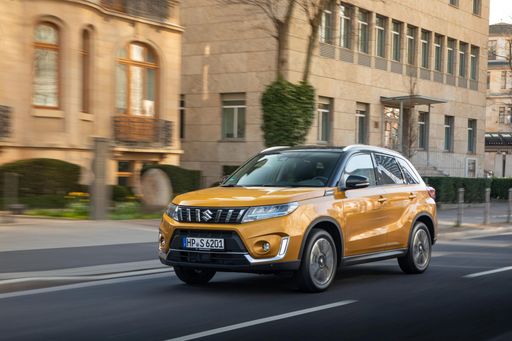
Suzuki Vitara
Hyundai Bayon
The Hyundai Bayon is a compact crossover that effortlessly merges practicality with modern design. Its sleek exterior and spacious interior make it an ideal choice for urban settings and longer journeys alike. With a focus on comfort and connectivity, this vehicle provides a smooth driving experience paired with advanced technology features.
details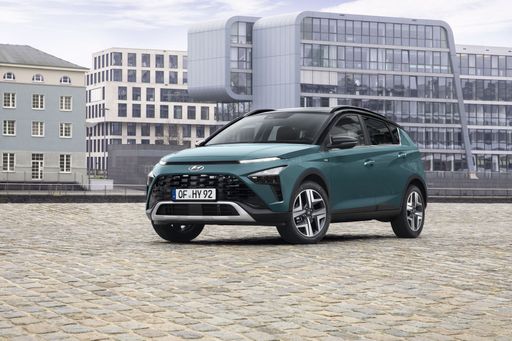 @ hyundai.news
@ hyundai.news
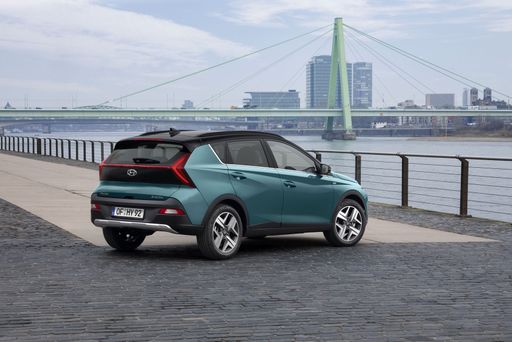 @ hyundai.news
@ hyundai.news
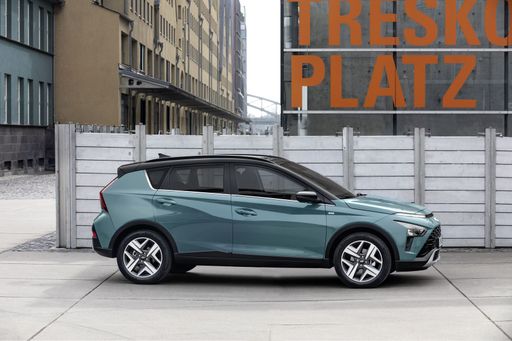 @ hyundai.news
@ hyundai.news
 @ hyundai.news
@ hyundai.news
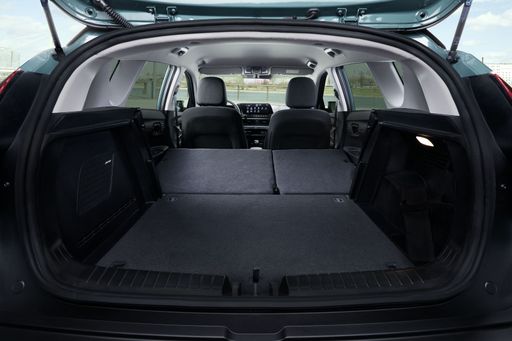 @ hyundai.news
@ hyundai.news
Suzuki Vitara
The Suzuki Vitara impresses with its compact design and robust stance, making it ideal for both urban and off-road adventures. Its sleek lines and modern aesthetics ensure it stands out on the road, complemented by a comfortable and high-tech interior. The Vitara offers a smooth and engaging driving experience, combining efficiency with practicality.
details @ Suzuki
@ Suzuki
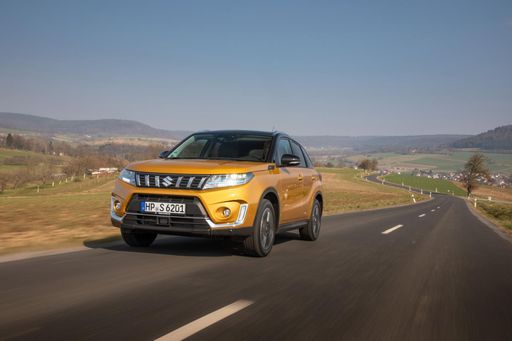 @ Suzuki
@ Suzuki
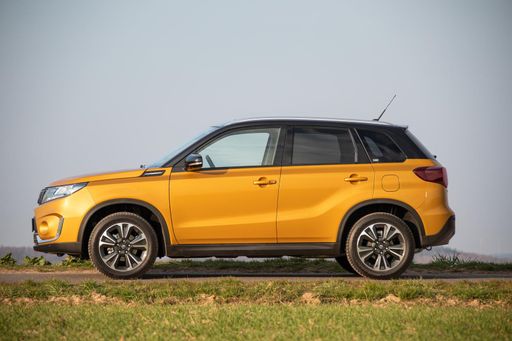 @ Suzuki
@ Suzuki
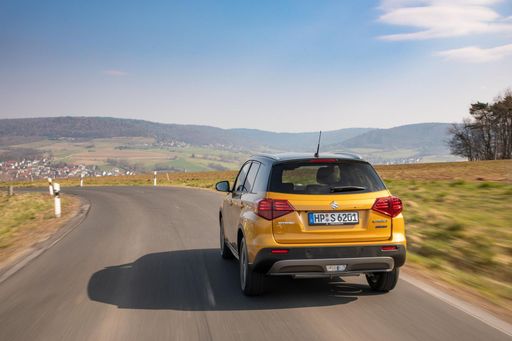 @ Suzuki
@ Suzuki
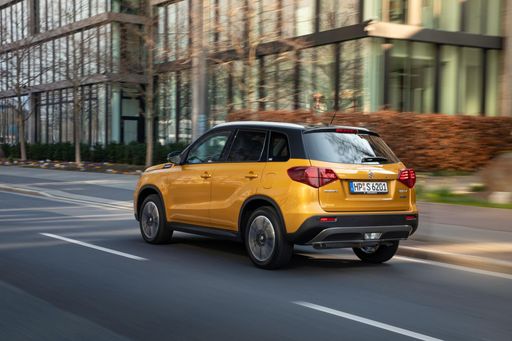 @ Suzuki
@ Suzuki
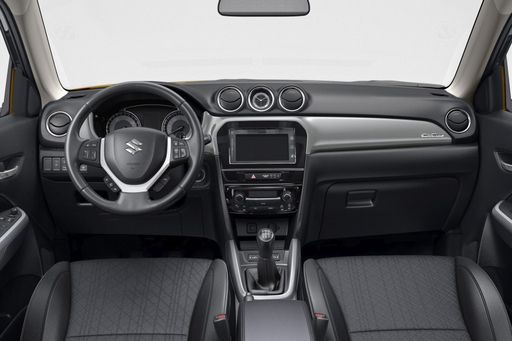 @ Suzuki
@ Suzuki

|

|
|
|
|
Costs and Consumption |
|
|---|---|
|
Price
20100 - 25800 £
|
Price
23600 - 30900 £
|
|
Consumption L/100km
5.4 - 5.5 L
|
Consumption L/100km
5 - 5.6 L
|
|
Consumption kWh/100km
-
|
Consumption kWh/100km
-
|
|
Electric Range
-
|
Electric Range
-
|
|
Battery Capacity
-
|
Battery Capacity
-
|
|
co2
124 g/km
|
co2
113 - 129 g/km
|
|
Fuel tank capacity
40 L
|
Fuel tank capacity
47 L
|
Dimensions and Body |
|
|---|---|
|
Body Type
SUV
|
Body Type
SUV
|
|
Seats
5
|
Seats
5
|
|
Doors
5
|
Doors
5
|
|
Curb weight
1170 - 1195 kg
|
Curb weight
1255 - 1395 kg
|
|
Trunk capacity
411 L
|
Trunk capacity
289 - 375 L
|
|
Length
4180 mm
|
Length
4185 mm
|
|
Width
1775 mm
|
Width
1775 mm
|
|
Height
1500 mm
|
Height
1595 mm
|
|
Max trunk capacity
1205 L
|
Max trunk capacity
1046 - 1120 L
|
|
Payload
460 - 465 kg
|
Payload
375 - 395 kg
|
Engine and Performance |
|
|---|---|
|
Engine Type
Petrol
|
Engine Type
Petrol MHEV, Full Hybrid
|
|
Transmission
Manuel, Automatic
|
Transmission
Manuel, Automatic
|
|
Transmission Detail
Manual Gearbox, Dual-Clutch Automatic
|
Transmission Detail
Manual Gearbox, Automated Manual
|
|
Drive Type
Front-Wheel Drive
|
Drive Type
Front-Wheel Drive, All-Wheel Drive
|
|
Power HP
100 HP
|
Power HP
116 - 129 HP
|
|
Acceleration 0-100km/h
11.3 - 12.4 s
|
Acceleration 0-100km/h
9.5 - 12.7 s
|
|
Max Speed
176 - 179 km/h
|
Max Speed
180 - 190 km/h
|
|
Torque
172 - 200 Nm
|
Torque
235 Nm
|
|
Number of Cylinders
3
|
Number of Cylinders
4
|
|
Power kW
74 kW
|
Power kW
85 - 95 kW
|
|
Engine capacity
998 cm3
|
Engine capacity
1373 - 1462 cm3
|
General |
|
|---|---|
|
Model Year
2024
|
Model Year
2024
|
|
CO2 Efficiency Class
D
|
CO2 Efficiency Class
D, C
|
|
Brand
Hyundai
|
Brand
Suzuki
|
What drivetrain options does the Hyundai Bayon have?
The Hyundai Bayon is available as Front-Wheel Drive.
The prices and data displayed are estimates based on German list prices and may vary by country. This information is not legally binding.
